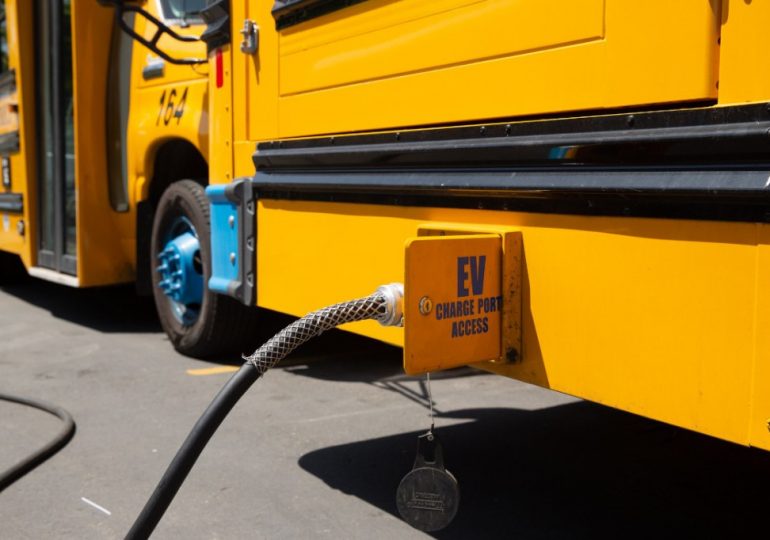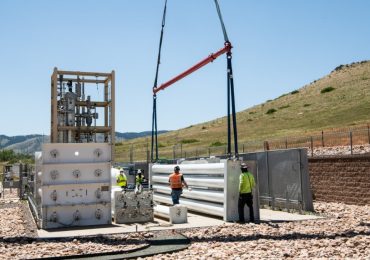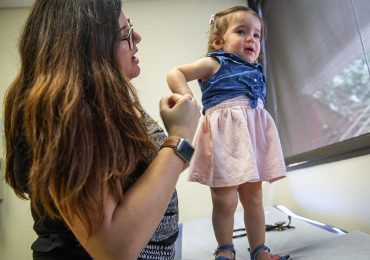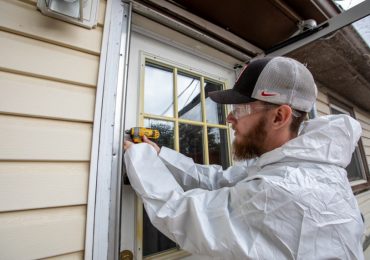Virginia is on a roll transitioning to electric school buses. And that momentum could remain uninterrupted if legislators activate a precedent-setting but dormant initiative to tap into state dollars.
Freshman Del. Holly Seibold has submitted a budget amendment this legislative session asking Virginia to catch up with other states by allocating $200,000 to jumpstart the Clean Vehicle Grant Fund. It has been left penniless since Seibold’s predecessor set it up three years ago specifically to help school districts rid their fleets of polluting, noisy diesel-powered buses.
The amendment calls for moving the money — half in 2025 and half in 2026 — from the general fund to the Department of Environmental Quality. DEQ staffers would use the $200,000—nowhere near enough to buy even one e-bus—to set up a working group tasked with establishing sources of long-term state funding for the transition.
A yes or no decision by the House Appropriations Committee could be made within the next month.
Seibold, the Democrat who represents Fairfax County, was responding to a plea — and an eleventh-hour phone call — from advocate Bobby Monacella, who played a pivotal role ushering in an e-bus evolution in Northern Virginia.
“Ideally, I just want Virginia to have a consistent stream of money so school districts that want to continue to electrify their fleets after this round of federal money runs out, can do so,” said Monacella, a Mothers Out Front campaigner in Fairfax County.
Thus far, Virginia’s approach to greening its diesel bus fleets has been piecemeal. School districts have plugged into federal dollars, public-private ventures, utility programs and even bought buses directly.
For instance, 67 buses are on the road or on order in Virginia thanks to grants the U.S. Environmental Protection Agency has awarded nationwide since 2022. That $5 billion for school bus electrification, folded into the federal Infrastructure Investment and Jobs Act, is expected to run out in 2026.
“When that federal money goes away, we have to figure out a way to pick it up at the state level so we can transition all the buses,” Monacella said about her hopes for a seamless switch. “That means convening a stakeholders work group to hash out the details of the program. So, this budget amendment is perfect timing.”
Mothers Out Front campaigner Bobby Monacella, far left, started pushing for school bus fleet electrification in Fairfax County, Va. She’s standing next to former House Del. Mark Keam, who launched the effort statewide. Credit: Courtesy photo
Health, climate drive electrification
In the federal government’s eyes, Virginia is viewed as an electric school bus pioneer because of legislation sponsored in 2021 by then-Del. Mark Keam, a Fairfax County Democrat.
His original measure was stripped of its original funding source, a tax on dyed diesel fuel, used in farm machinery and other non-highway vehicles. The substitute version, passed into law, directed the state DEQ to hash out details for the grant fund via a workgroup. Neither the working group nor the financing mechanism ever materialized.
Keam, who resigned in 2022, had advanced the bill because his daughter suffered from asthma and he wanted all children to have a healthier, pollution-free ride to school.
Despite the lack of a dedicated state funding source, Virginia ranked fourth nationwide in the number of electric school buses either on the road or on order, according to data compiled by the nonprofit World Resources Institute through December.
Since 2021, several other states — including top three finishers California, Maryland and New York — have enacted either robust incentive, mandates, or both to encourage school districts to switch to electric buses.
Climate change and students’ health and safety motivated Monacella, then a volunteer activist, and other members of a joint environmental task force to spur Fairfax County into adopting a mandate in 2019 that all 1,625 buses in its fleet be electric by 2035.
Mothers Out Front carried the enthusiasm of that local victory to the General Assembly two years later to be a driving force for House Bill 2118, Keam’s bipartisan, ambitious undertaking to create a specific grant funding model for bus electrification over 10 years.
This session, Monacella decided that three years is long enough for the law to languish, unfunded.
“It’s a tribute to former Delegate Keam that Delegate Seibold has picked up the flag and carried it,” she said. “What he did was precedent-setting.”
Tish Tablan, who leads the Electrify Our Schools program at the Charlottesville-based Generation 180, is as motivated as Monacella about dedicating dollars to fleet conversions.
“State funding is necessary to support school districts in upgrading to electric buses,” said Tablan, senior program director at the nonprofit. “It’s time for Virginia to invest in protecting our children and communities from the harmful effects of diesel air pollution.”
Down to the wire
Monacella and Seibold had discussed funding for electric school buses months ago, but nothing specific had emerged from those conversations.
A budget amendment likely wouldn’t have surfaced if Monacella hadn’t participated in an online question and answer session with legislators on Jan. 12 organized by the Virginia Grassroots Coalition.
“Being aware of the deadline for budget amendments should’ve been my first priority,” said Monacella, who only recently had become a full-time advocate. “I thought I had missed it.”
When another delegate attending the online forum told her the deadline was 5 p.m. that day, Monacella signed off and sprang into action with Seibold’s staff.
“It was kind of a crunch but we got it in there,” she said about the scramble. “I totally admit I dropped the ball. It was kind of everyone to help me recover.”
Electric school buses are roughly three times as expensive as traditional diesel ones. A basic price tag on a 77-passenger electric bus in Virginia is $368,500, compared to $120,099 for a diesel model, according to Whitney Kopanko, the electric vehicle program manager at Sonny Merryman. The Prince William-based bus dealer controls 60% of the overall school bus market in Virginia.
Through January, Fairfax County had 73 buses on the road or on the way to the district. That’s close to one-fourth of Virginia’s electric bus total of 302 — out of 16,000-plus buses in service statewide.
“I don’t know about the ins and outs of a potential funding stream,” Monacella said about the eye-popping investment needed to replace thousands more buses. “I do know we have a long way to go and the federal money isn’t going to cover that.”
She’s willing to devote the legwork to the cause in the name of curbing carbon emissions.
As evidence, Monacella “repented” for her budget amendment oversight by traipsing to the offices of House Appropriations Committee members in Richmond earlier this month to drop off flyers she designed to educate staffers about restoring Virginia’s status as a leader on school bus electrification. Seibold, who doesn’t serve on that committee, also will be nudging her fellow legislators.
“I wanted to bring it to their attention so when they sit down and sort through all of these amendments they might remember this one,” Monacella said. “I figured, why not?”
Virginia legislation would activate state program to fund electric school buses is an article from Energy News Network, a nonprofit news service covering the clean energy transition. If you would like to support us please make a donation.
Leave a comment









